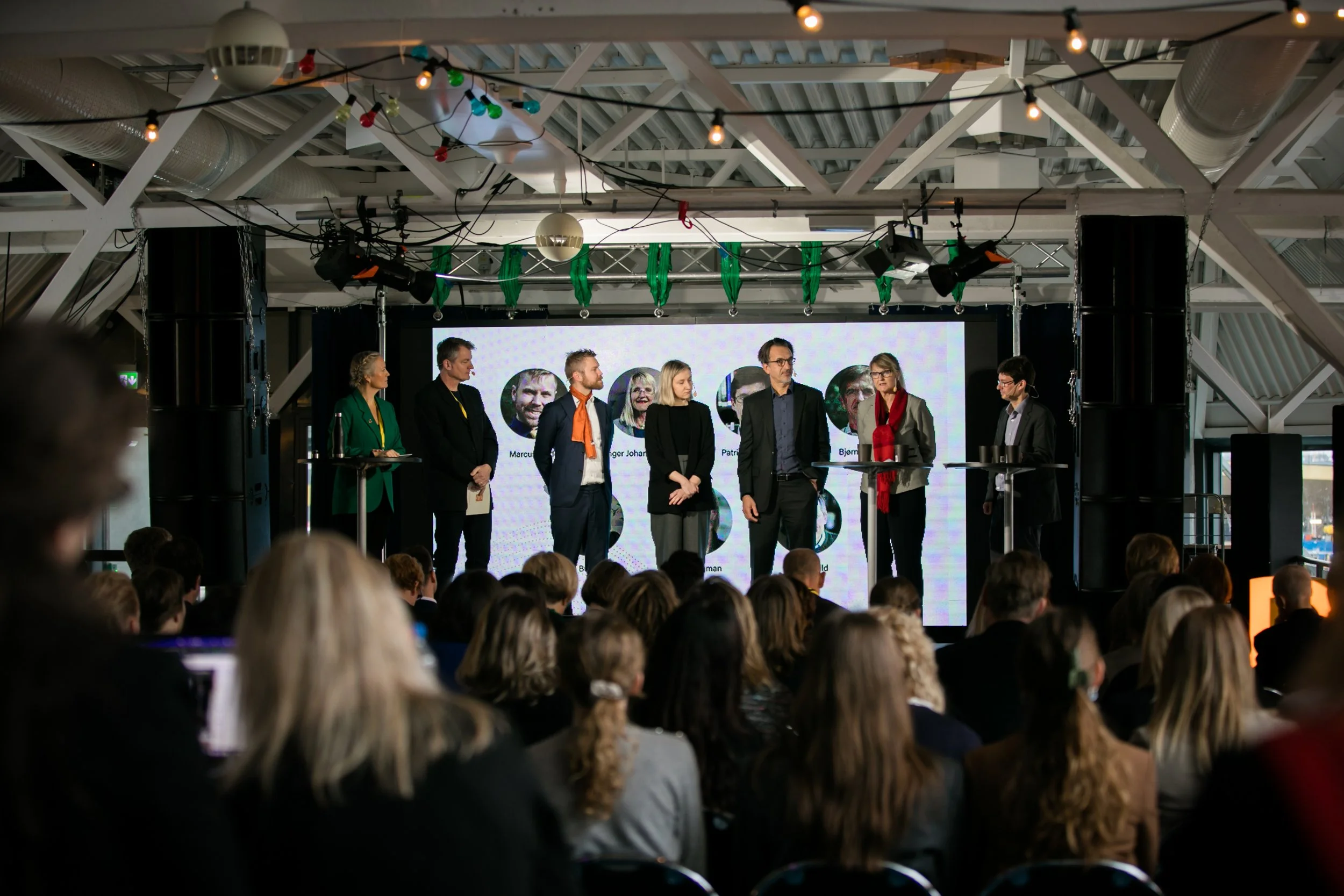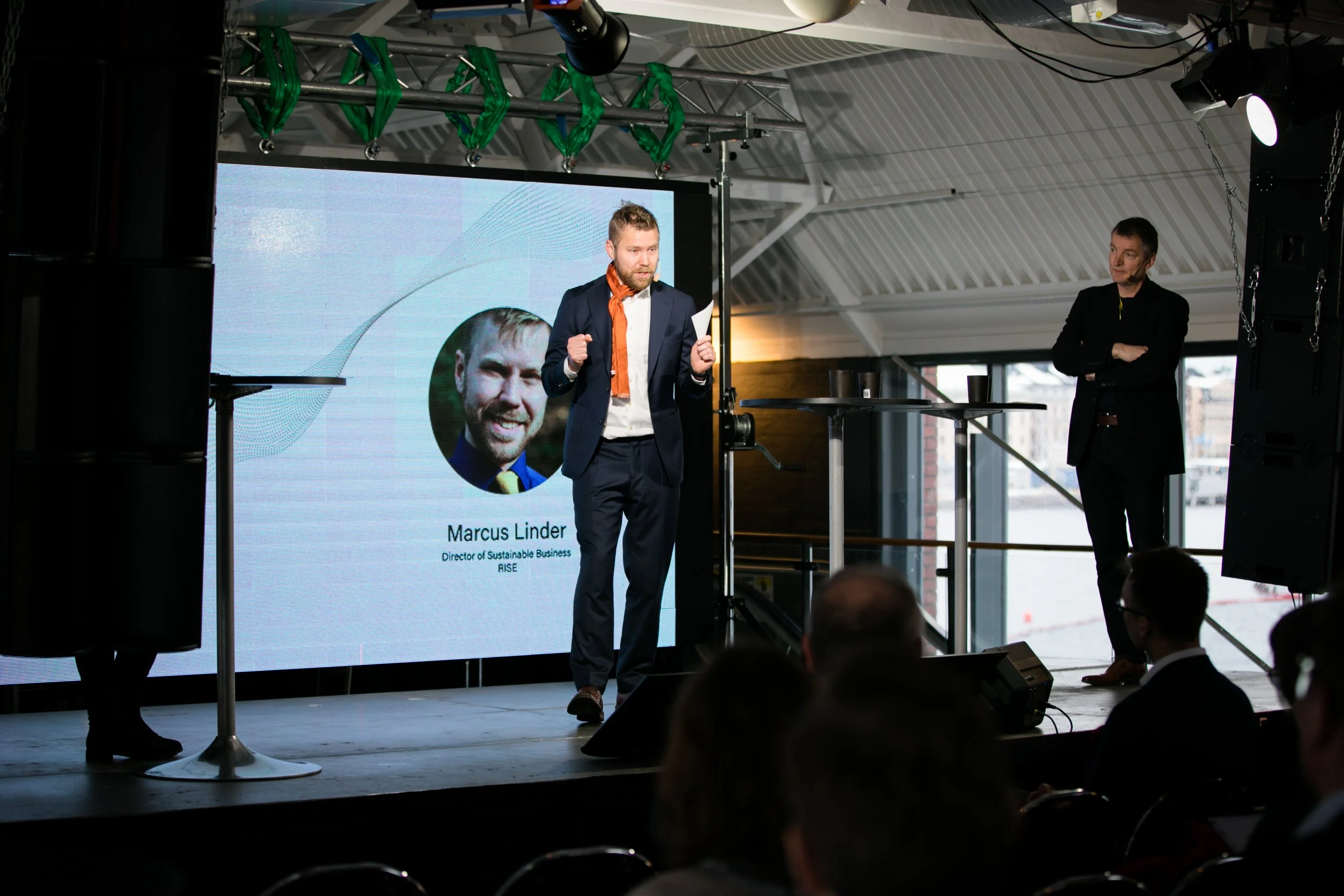The State of Nordic Circular Transition
The Nordic region is often looked upon as a frontrunner when it comes to sustainability and climate action. The same goes for the circular economy transition — but how far have the Nordics actually come in this transition? What kind of plans have been developed so far and are there certain Nordic focus or problem areas that need immediate action?
Our region has barely even left the bus station of the circular journey.
Marcus Linder from the RISE Research Institutes of Sweden uses a bus as a metaphor to explain where the Nordics are in the circular transition: “Imagine that the bus is going to town Circular and we need to know how far the bus has travelled, the distance being the resource productivity of our economy. The speed of the bus, how fast it is going, represents the number, volume and quality of the activities towards improved resource productivity — and we need to know if we are accelerating or braking.”
When it comes to distance travelled, we can use the Circularity Gap reports which are, in essence, material flow analyses — and, here, if we look at Sweden or Norway, they have only travelled 2–3% of the distance. Another way of measuring this is using the Eurostat Circular Material Use Rate where Denmark is at 8%, Sweden is at 7% and Finland is at 6%. Yet another way is to look at the material footprint or raw material consumption. Here the Nordic countries are currently using about 25 tonnes per person per year of materials — compared to the rest of Europe's average of 14 tonnes per person. All of this data shows that our region has barely even left the bus station of the circular journey. But we should not worry about that too much, it was the same situation at the beginning of the 90s during the internet revolution, we were roughly around 5% in development at the time but look how fast the transition went in the end!
With the exception of Finland, the material footprints of the Nordic countries are going up
When it comes to the speed of the bus, the volume and quality of the activities moving towards improved resource productivity and circular economy, the most important indicator is the number of circular initiatives in the industry. We can only get a rough estimate of this if we look at Europe's Eco Innovation Index, and here the Nordic countries are at the absolute top, which is great because circular transition is a lot about innovation in the end!
Another way we can assess the speed of the bus is to look at the change in the distance over time, which means the change in material footprint or circular material use rate. In this aspect, the Nordic countries are not doing any better — in fact, with the exception of Finland, the material footprints of the Nordic countries are going up. And the circular material use rate is not improving either. In fact, the countries south of us are improving and overtaking our bus!
In summary: we are not even going at cruising speed
In summary — when it comes to the speed; the industry seems to be gaining some speed but the bus is otherwise slowly rolling, not even going at cruising speed.
And when we come to acceleration — are we pressing the gas pedal or are we braking? Let's look at the national strategies of the governments. The Finnish strategy is a little bit ahead of the rest, especially since they have allocated resources to different concrete initiatives. There is no strategy made by the Icelandic government so they are still looking for the gas pedal there.
Another angle to look at this issue is to look at taxes in the different countries and the share of government income that comes from taxes related to environmental harm. Here Denmark and Finland are ahead at 7%, Norway and Iceland are at the European average of 5–6% and Sweden is behind the curve at only 4%.
The crazy investments from the 90s are also missing from the equation. And if we want to gain real speed for the bus, we need a new dot.com bubble.
Another thing we can compare is public opinion. And here I want to remind you again of the internet revolution in the 90s. The TV media were full of cool, engaging people in suits and colourful sneakers telling everyone how amazing and fantastic the future internet age would be. We do have some cool circular prophets today as well — but those prophets are focusing more on the “doom and gloom” of the situation instead of how wonderful the circular future will be. And this is one of the areas where we are missing a part of the acceleration — we are missing the visionaries and the good inspiring stories.
The crazy investments from the 90s are also missing from the equation. And if we want to gain real speed for the bus, we need a new dot.com bubble. Even if some investments will be bad big investments, they will still speed up the overall circular transition.
So, finally, the Nordics are behind on distance and still have a long way to go on the circular journey, but we are probably around average when it comes to acceleration — the speed is uncertain but we have a really big engine that we could use.
Industry — the ball is in your court
The call to action from all of this information regarding the bus is for industry; the ball is in your court — so don’t expect anyone else to come and push the bus for you! For politicians it is; it would be awesome if you would like to press the gas pedal a bit more. For researchers; we need information on the speed dial of the bus — which means an assessment of the number and quality of circular transition activities being initiated. And for the rest; I really encourage you to not only think of the circular economy as a solution to doom and gloom scenarios — but use visions and grand dreams and strengthen the heart of the bus driver so that she or he is able to hit down on the gas pedal a bit more!
Written by Elin Bergman
This article is based on the learning from the Nordic Circular Summit 2022 session ‘The State of Transition’. Watch the full session with Marcus Linder, Inger Johanne Wiese, the Nordic Working Group for Circular Economy (NCE), Patrick Schröder, Chatham House, Bjørn Bauer, NORION Consult, and Ugnė Budriūnaitė, ReGeneration 2030.














